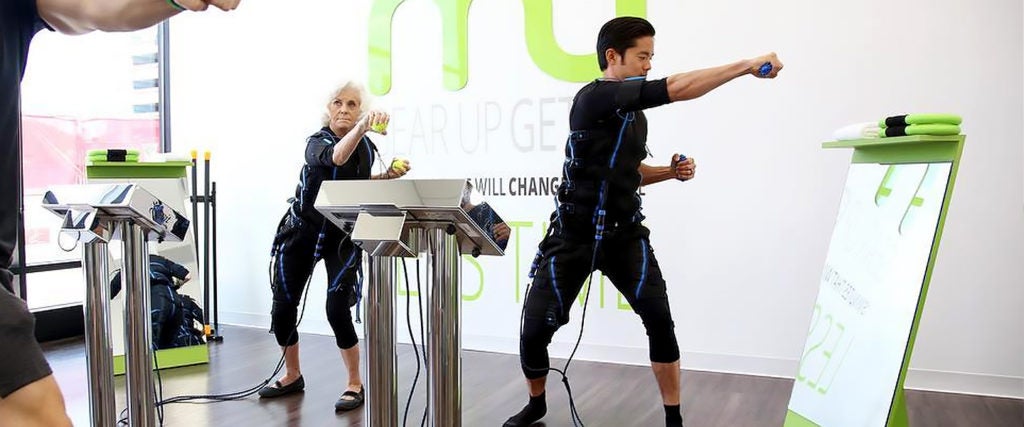Who needs treadmills and dumbbells when you have a fancy bodysuit that sends electrical pulses through your muscles? This is the logic behind the Manduu exercise program, electrical muscle stimulation (EMS) workouts that allegedly generate results equal to six hours in the gym in a matter of only 15 minutes.
But can that possibly be true?
Strap in to find out.
A Manduu exercise suit, huh? And electrical pulses?
Yep! The Manduu suit is connected to a battery-operated EMS machine that generates electrical impulses, which create resistance in your body. Working against that resistance through a series of stretches and basic movements, like planks, lunges and squats, builds muscle. Manduu claims, “When the brain sends a signal to a muscle, only about 65 percent of muscle fiber is activated. By contrast, the external EMS stimulus penetrates nearly 100 percent of muscle tissue.” The alleged result is a low impact but incredibly efficient workout.
Does Mandu exercise hurt?
According to Manduu, it will “feel like a buzzing in the nine major muscle groups covered by the electrodes, but it is not painful.” That said, communicating with your trainer during any kind of EMS workout is essential to ensure that the pulses are challenging enough, but not microwaving your muscles.
Where did they even get this idea?
In the 1950s, an EMS device called the Relax-A-Cizor became super popular after being marketed as an effortless way to get thin… before it was outed as unbelievably dangerous and compared to ruthless torture. It apparently prompted miscarriages, motivated irregular heart contractions and even inflamed cancer cells. The FDA eventually ordered the destruction of Relax-A-Cizors, or at least for them to be made inoperable, and banned the resale of already purchased devices. The one upside of that whole mess is that it spurred FDA regulation — and Manduu, for instance, is an FDA-approved EMS training program.
All that said, I suspect that Manduu is less inspired by devices like the Relax-A-Cizor and more inspired by modern physical therapists, who often use e-stim therapy. This similarly sends mild electrical pulses to stimulate and strengthen injured muscles by making them contract. These pulses can also be aimed at the nervous systems of people with chronic pain to block sensory receptors from sending pain signals to their brains. And it works!
Sounds kinda wacky and possibly very dangerous. Does it work?
You can rest easy knowing that what Manduu provides is much less reckless and much more planned out than the Relax-a-Cizor. Still, if you use a defibrillator or pacemaker, the FDA recommends steering clear of EMS altogether.
There are a handful of (admittedly small) studies that suggest EMS workouts really can produce at least some of the results they promise by calling upon more of the fibers in your muscles. For instance, in a 2016 study, participants who engaged in a six-week squat program with EMS saw greater strength improvements than those who went without EMS. Research also shows that people who use EMS training are perhaps more likely to exercise more in general as their muscles grow stronger, which is a nice unintended side effect.
But while promising, we still have a lot to learn about the Manduu exercise program and EMS workouts more generally. A 2019 review of e-stim research was unable to make any real conclusions about the effects of EMS training, and some studies suggest that EMS workouts have little impact on strength or endurance. Even the FDA says, “While an EMS device may be able to temporarily strengthen, tone or firm a muscle, no EMS devices have been cleared at this time for weight loss, girth reduction or for obtaining ‘rock hard’ abs.”
So should I get zapped?
Maybe? The alleged benefits of EMS workouts are certainly possible, and Manduu provides everything you need for a safe experience and a high chance of success. Just remember that the hype is slightly ahead of the research, so as with many fad workouts, joining a Manduu exercise class is a bit of a gamble.
You do get to wear a cool suit, though.

